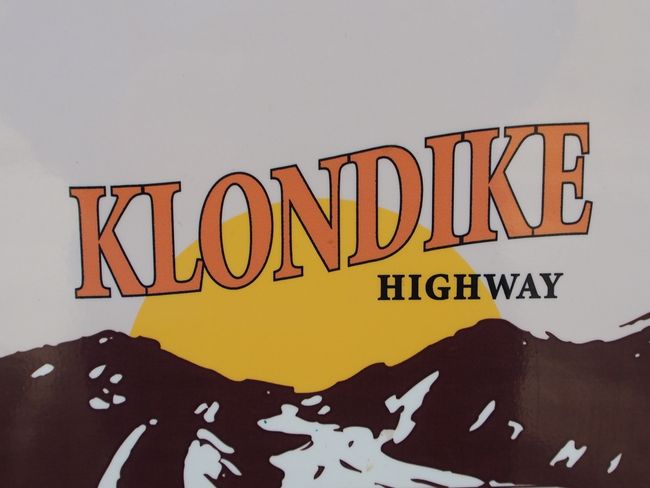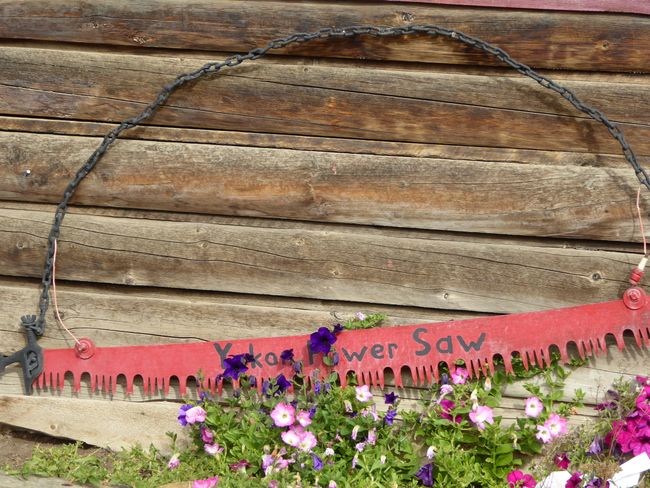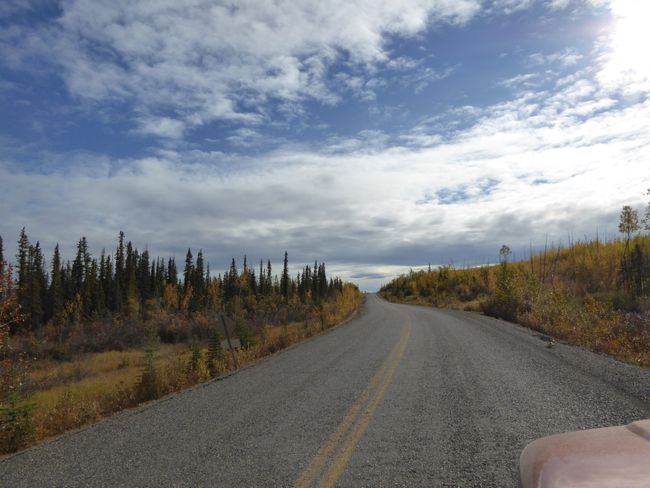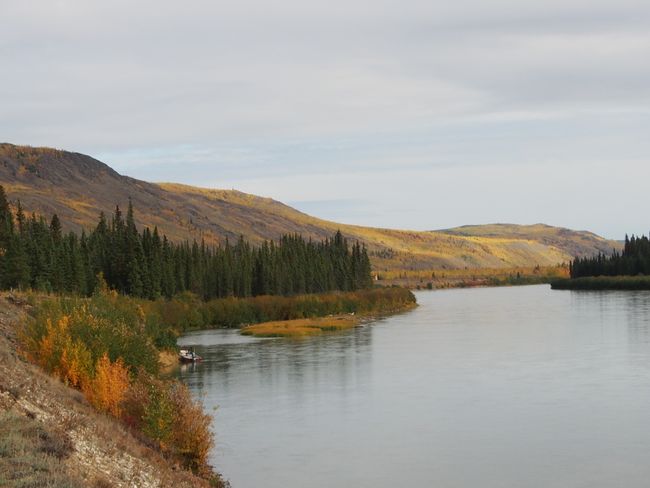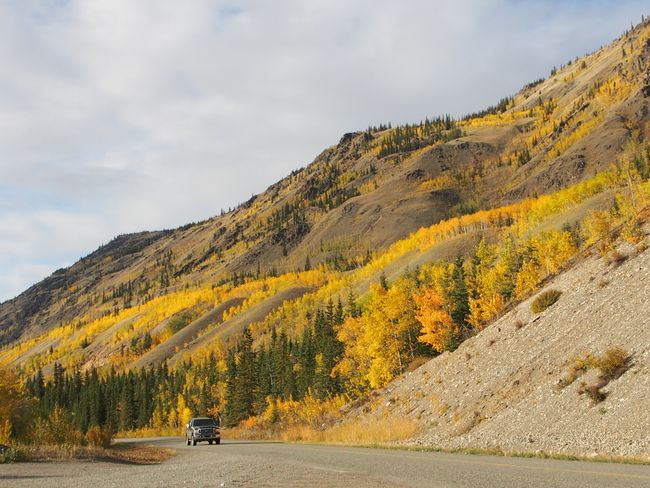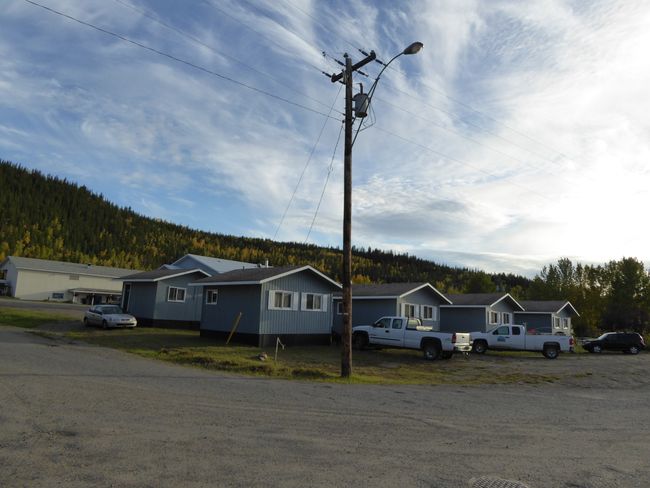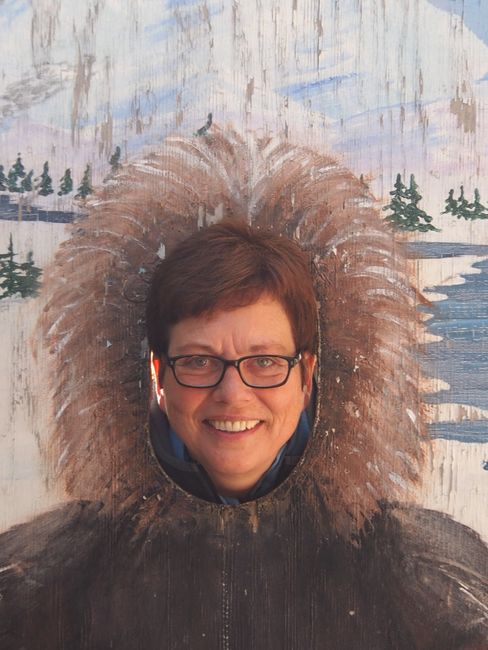
Alaska & Yukon im Herbst: 6000km mit Grizzlies, Goldgräbern und Polarlicht
vakantio.de/alaskaundyukonimherbst
Klondike Highway: From Dawson to Carmacks
Dɛn dɔn pablish am: 14.08.2019
Sabskrip to Nyusleta
10.09.2014
Good morning in Dawson: Overcast sky and +4°C - almost summer-like and the car is ice-free! Coffee in the room and a banana in hand, and off we go. We're tired because last night we didn't go to sleep until 2:30 am, after reviewing pictures and writing in the diary. We fill up the tank again and drive to the Dänojà Zho House, which is a museum and cultural center of the local First Nation. An informative tour by a young woman and a subsequent film provide good information.


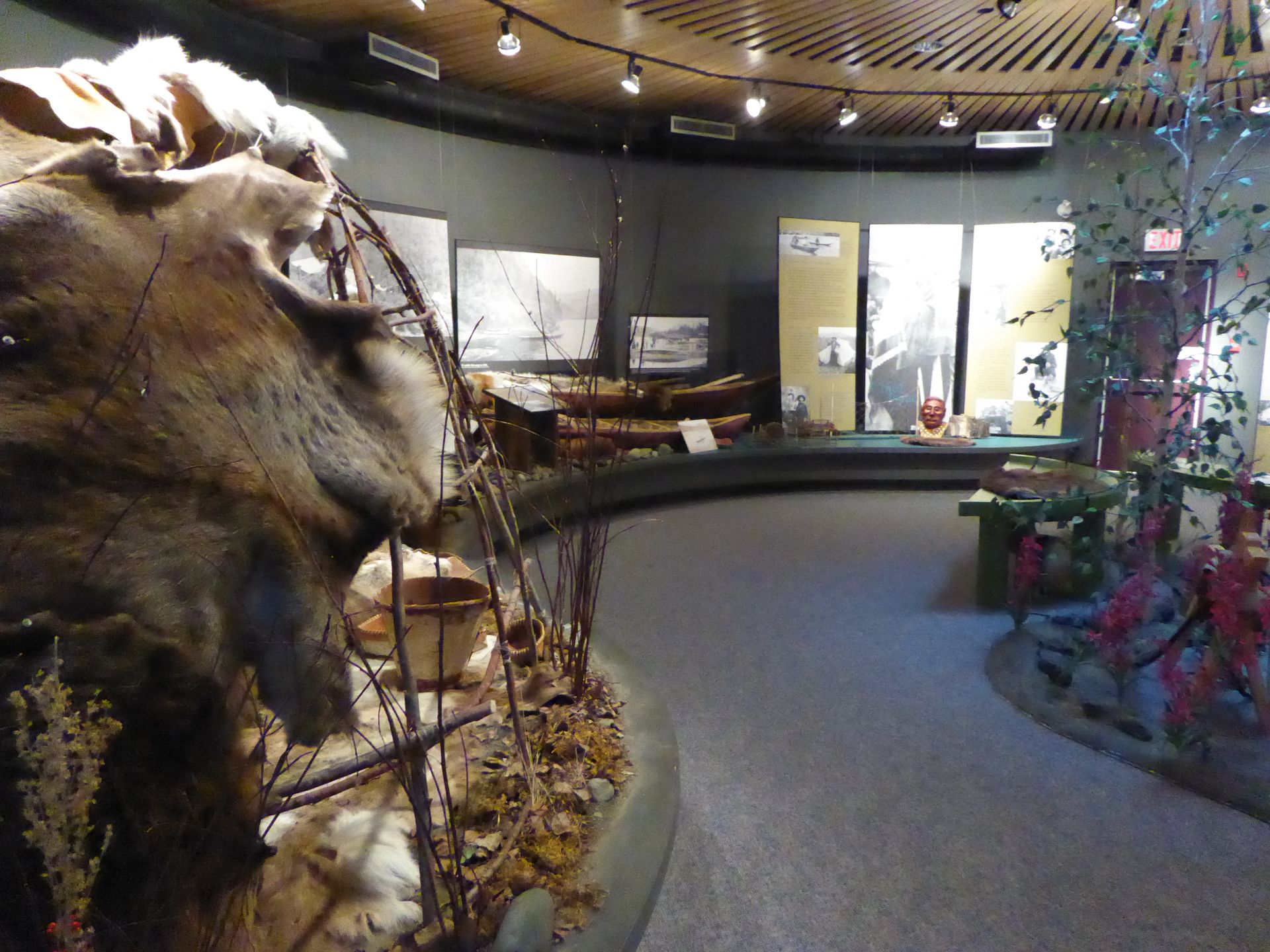
Like everywhere else, the First Nation people have been treated incredibly brutally over many years. The tribe has been living here for over 10,000 years, and the Christian missionaries have not always done good here either. Children were sent from the area to schools in Whitehorse, but they remained outsiders there. They were separated from their siblings and later returned to their tribe as strangers. Until the 1960s, Canada had a law that simply prohibited the customs of all tribes, such as singing, dancing, etc. Songs, texts, and customs were eventually lost in part or completely, as the tribes did not have written languages to transmit their spiritual heritage. It was not until Trudeau that the First Nation people were given more rights, including the right to their own land. Until 1951, the indigenous tribes of Canada were not even considered humans, but were classified as things. Of course, they had no voting rights or presence in any governments. This only changed in the late 1970s!
We hear a lot about the use of natural materials and animals, and that the latter were only hunted to be used in any form. Not only as food, but also in all possible components for all kinds of purposes. Trophy animals were never hunted, and hunting was never considered a sport. Bears in particular are highly respected and are only hunted in extreme cases when urgently needed medicine can be extracted from them to save a human life. Bears are considered human-like, as when you remove the fur and flesh, they reveal a human-like skeleton.
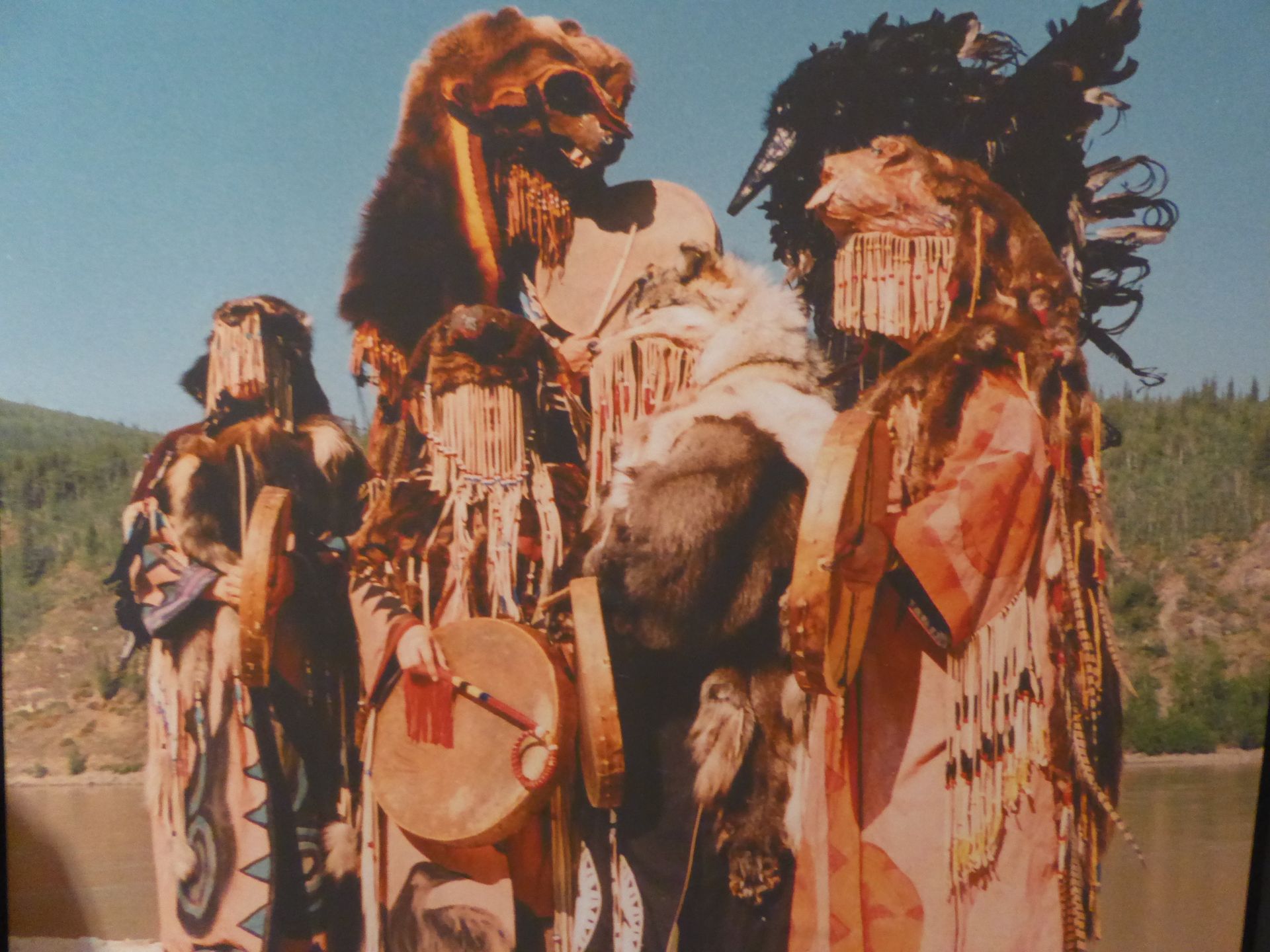
The tribe that was always home here in Dawson left the city a long time ago. They were offered a settlement in the middle of the town of Dawson, where the executioner had executed people for many years. Since this was not acceptable and the First Nation people recognized their inferiority, they followed their Chief Isaac to the other side of the Yukon River to Moosehide, which is about 2 miles upstream. However, it seems that no tribal members live there permanently today. But the place is used for festivities and the preservation of traditions.
It is astonishing that in the school in Dawson City, everyone - including the white children - must learn the language of the local tribe. Currently, about 700 members of the tribe live in and around Dawson City, which accounts for about 50% of the total population.
We see how fish used to be caught from the Yukon. With a fish wheel. A kind of basket wheel that was turned by the river itself and simply "collected" fish in the baskets facing against the current. Once the basket rotated out of the water and tipped over, the cargo was deposited in side-mounted collecting basins. From there, you only had to catch the fish with nets and you had fresh fish. In particular, King Salmon were caught here in large numbers in the past. Today, their catch is prohibited because the fish are threatened.
It is already 12:00 noon when we leave here again. Quickly get a coffee at the gas station, go to the post office to buy stamps, and quickly buy a scarf and some postcards in a souvenir shop, and off we go into a new day. We briefly stop halfway up "The Dome", and now in daylight, you can also see the region of gold mining on the other side. What a mess!

Gold mining area near Dawson
Since there won't be anything happening in Carmacks, our destination today, we are in no hurry. We stop at half past two at the Moosecreek Lodge, which does not in any way resemble a lodge. Outside, there is a junk car (maybe it isn't?) with moose antlers as decoration on the radiator. And here we see the tall warehouses that were used or still are used for food, especially in winter.
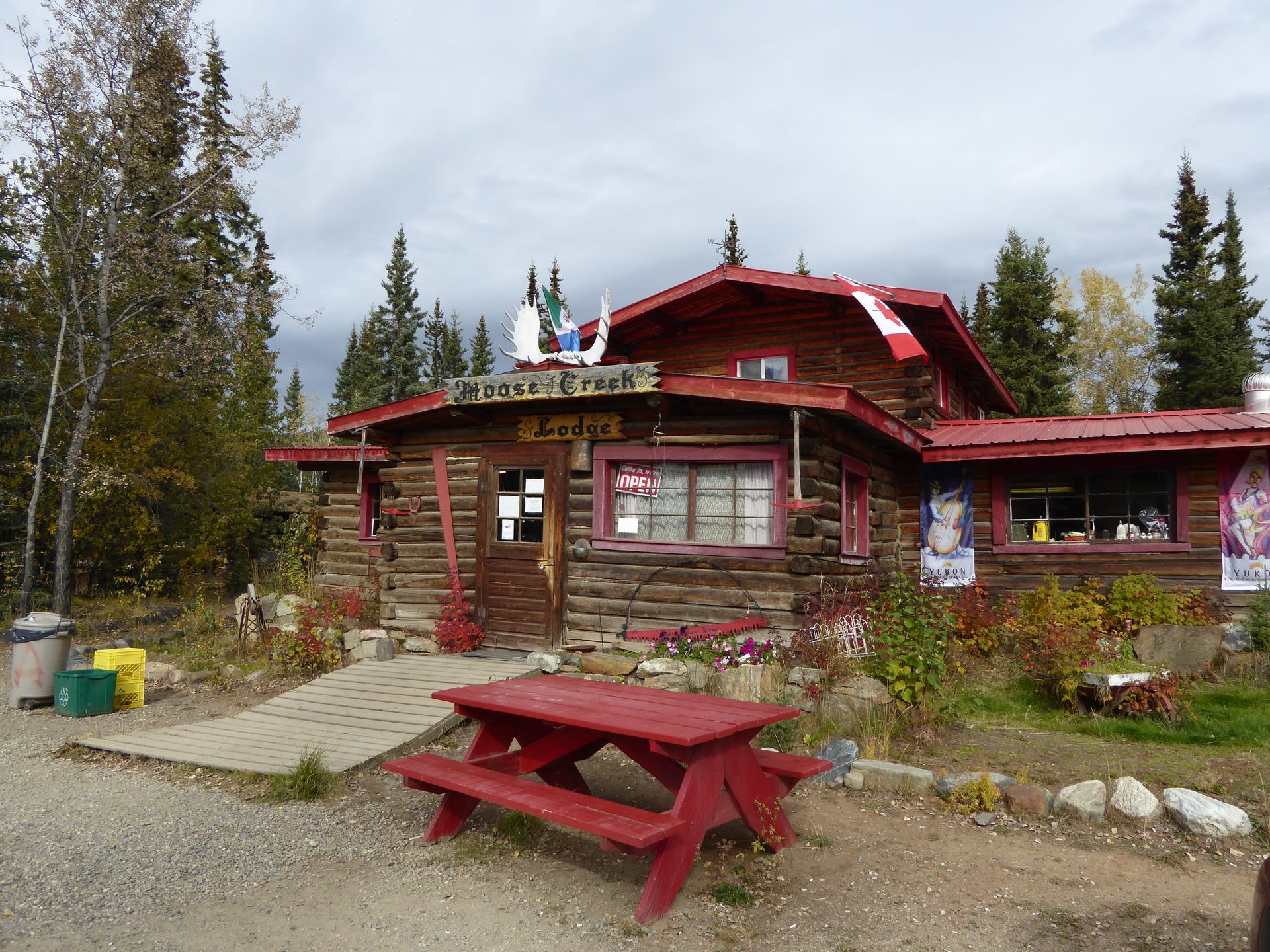
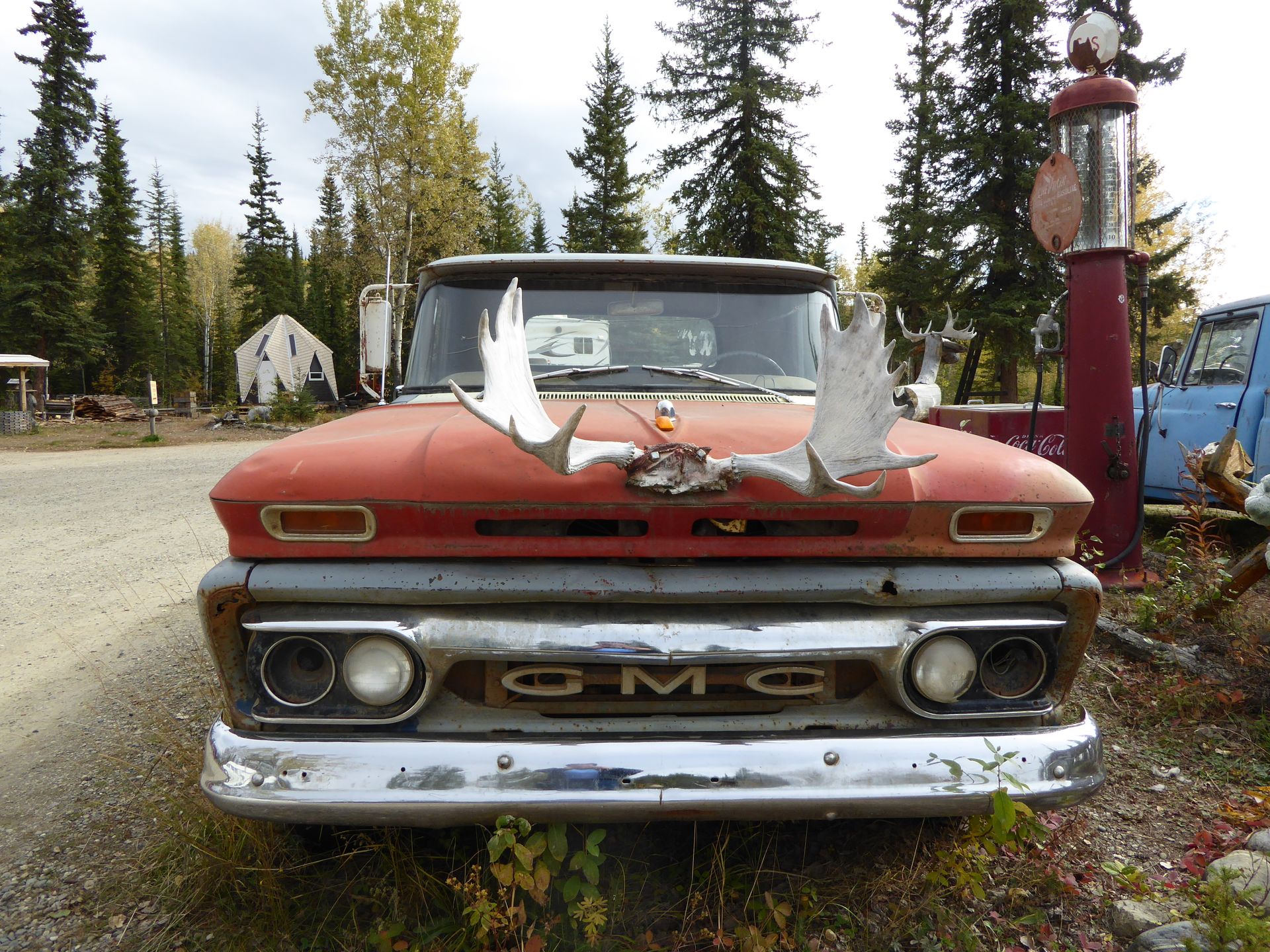

The wooden shack is both a small restaurant and a souvenir shop. Behind it, there are a few wooden cabins that can be rented. An unfriendly Franco-Canadian woman sells us a coffee and a blueberry tart, and we're back on the road after 20 minutes.

On the road, the Yukon River often runs alongside us, in many twists and turns and occasionally incredibly wide. Islands, curves, and then it's gone again. At Miso, we briefly detour to an abandoned campground and for once find acceptable toilets, which remain rare on the Canadian part of our trip. A beautiful view of the fast-flowing Yukon River, a quick snack break, and we continue in the sunshine towards Carmacks.
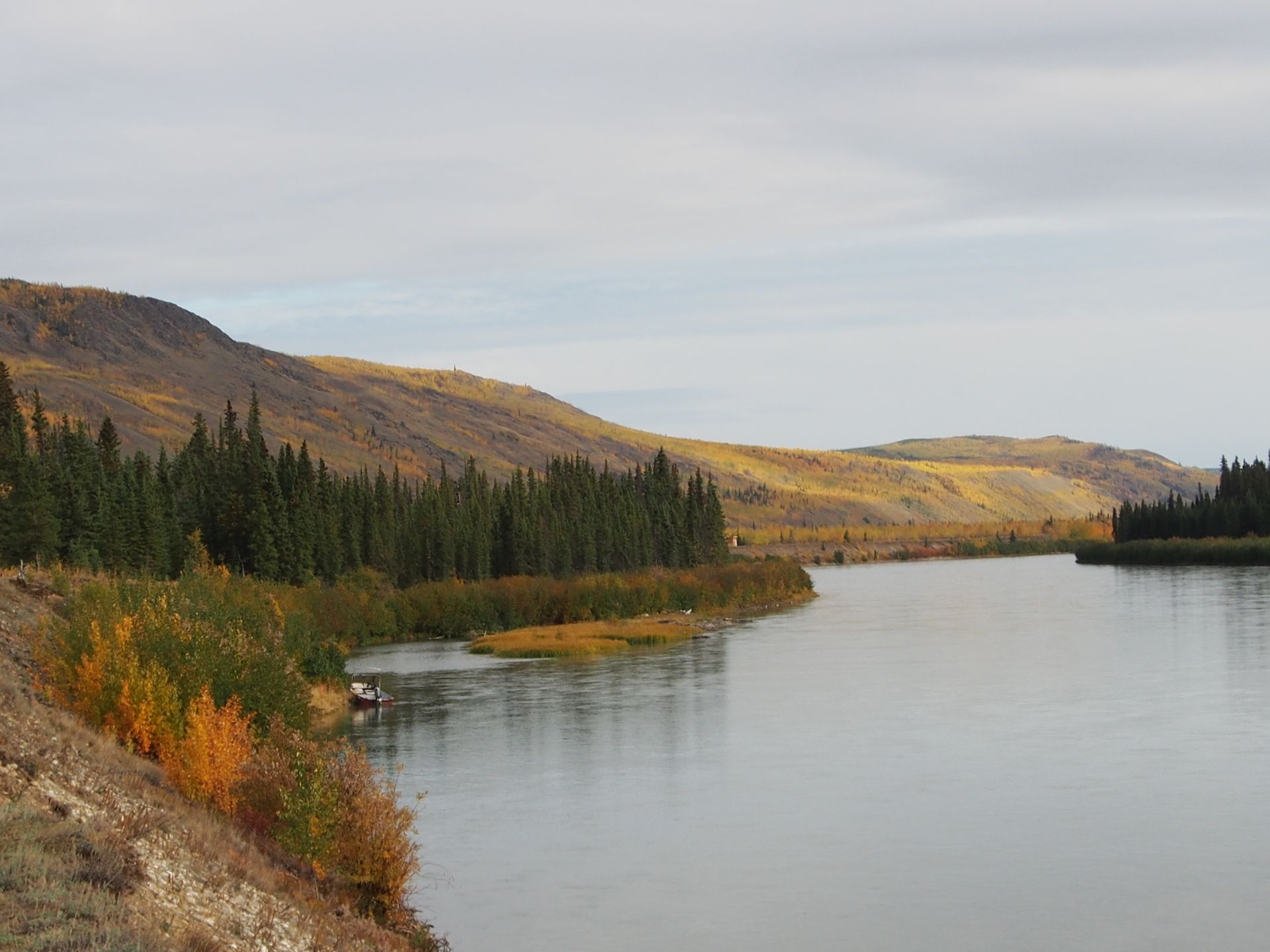


The Five-Finger Rapids are just before our destination for the day. Many of the gold miners lost their belongings - and some even their lives - at this extreme bend in the Yukon River. An tight curve with several rocks in the river poses the highest demands on the boat pilots. Paddlewheel steamers used land-anchored steel cables and winches to safely cross these rapids.

Five Finger Rapids
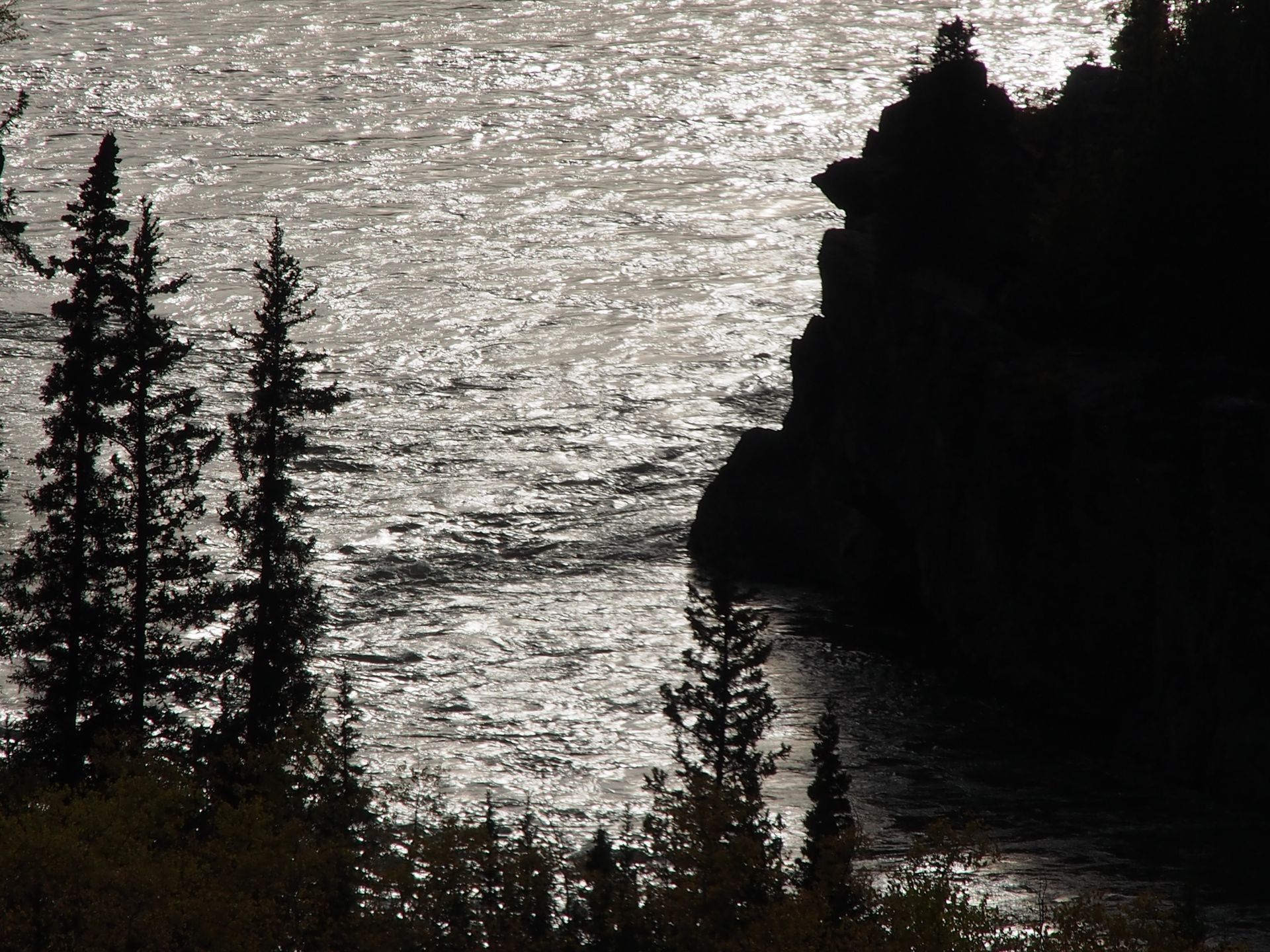
Rapids
30 kilometers further, we reach Carmacks, which is a cluster of 5 houses along a gas station on the Klondike Highway. The gas station is also the general store, which seems to have everything. From headache tablets to meat, rubber boots and fishing equipment, frozen food, and children's toys.

The gas station in Carmacks
Next door is the Goldpanner Restaurant, which is very basic. But after a day with a banana, a bell pepper, and a chocolate bar, the burger and fries actually taste good. Two beers with that, and off to the room.
The hotel is very strange, and the associated bar looks like the entrance to a brothel. The hotel consists of a motel building and several cabins that are closer to the river.


In the hotel, Internet is free for 1 hour, after that it costs 5 CAD or 10 CAD for fast Internet. The water smells and tastes extremely sulfuric, which is also evident from the faucets. So bring bottled water for brushing your teeth! While the Goldpanner Restaurant closes at 9:00 pm, the hotel bar stays open until 2:00 am. But fortunately, it remains quiet.
Distance traveled: approximately 360 km
Sabskrip to Nyusleta
Ansa

Travul ripɔt Kanada

